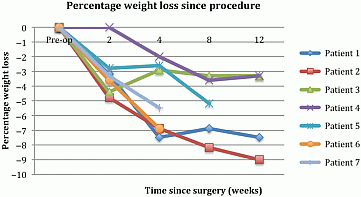BSPED2013 Oral Communications Oral Communications 3 (6 abstracts)
A feasibility study of intra-gastric balloons (supported by a lifestyle programme) for the treatment of severe adolescent obesity – the (BOB) Study.
Pooja Sachdev 1 , Lindsey Reece 2 , Rob Copeland 2 , Jerry Wales 1 & Neil Wright 3
1University of Sheffield, Sheffield, UK; 2Sheffield Hallam University, Sheffield, UK; 3Sheffield Children’s Hospital, Sheffield, UK.
Rationale: Although many adolescents meet the NICE criteria for bariatric surgery there is a reluctance to undertake or commission such irreversible procedures in young people. Balloons are temporary, reversible, safer and more acceptable and in adults have been shown to promote a clinically significant change in BMI of 4.0–9.0 kg/m2 But due to subsequent weight regain, bypass surgery is preferred.
This is a feasibility study of endocsopic intragastric balloon placement for 6 months supported by a lifestyle management programme.
Objectives: i) To assess the efficacy of the intragastric balloon s supported by a lifestyle intervention to promote weight loss in severely obese adolescents.
ii) To assess the effect of the weight loss on biomedical outcomes such as glucose metabolism, lipid profiles, bone density and architecture and psychosocial health.
Methodology: A cohort study of 12 adolescents (BMI >3.5 S.D., Tanner stage 4 or above) with a 2-year follow-up. All the young people took part in a comprehensive medical assessment including OGTT’s, measurement of basal and stimulated incretins, bone turnover markers, DEXA scans and high resolution peripheral quantitative CT scans.
Results: Nine young people (four girls) currently recruited. Average age, weight, BMI and BMI SDS are 15.5 years, 139.8 kg, 47 kg/m2 and +4.0 respectively.
Average weight loss at 4, 8 and 12 weeks is 6.3, 7.7 and 8.4 kg (Figure 1).
First balloon removals are in August 2013.

Figure 1 Graph depicting percentage weight loss over time.
Conclusion: Interim data suggests that the young people will experience clinically significant weight loss. The balloon has been well tolerated. Some data on impact of weight loss on BP, OGTT and safety issues including skeletal health will be available at time of presentation.
 }
}



